Displaying items by tag: maternity home
Celebrating Post-Residential Care
by Mary Peterson, LAS, Housing Specialist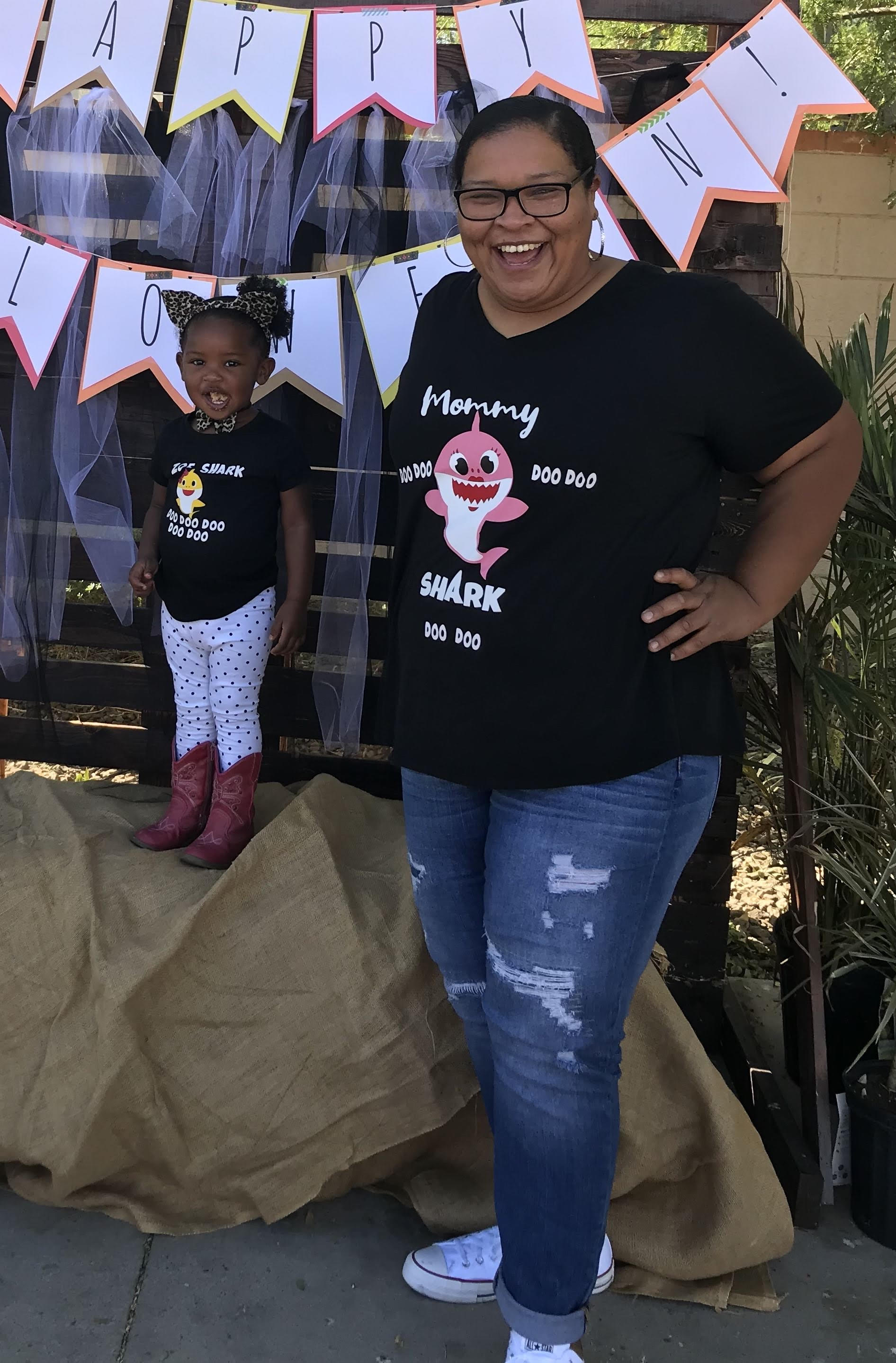
Heartbeat International
Aretha arrived to Maggie's Place in March 2017, just eight weeks pregnant with her daughter Zoe. She arrived with over 20 years of drug and alcohol use and a history of prostitution. “I came from chaos and darkness and stepped into a sanctuary of peace,” she described. “It was the love and sacrifice that the staff gave me that made me feel like I was part of a family.”
During her time, she described running “home” – to the maternity home – when temptations for relapse were high. “I was given time to grow and heal, to be loved and encouraged” she said, “I loved just eating together and celebrating one another.” One special memory involves watching one of the staff members read to a baby. “I had never seen that,” Aretha remembered, “It made me start collecting books and now, I read to my daughter all the time.”
“For me, having the ongoing services after I moved out played a huge role in my sobriety,” Aretha spoke with conviction. After moving into a transitional apartment, she participated in parenting groups, ongoing therapy, Mommy & Me groups, and attachment groups, all offered as ongoing services for former residents. Aretha mentioned that the feeling of connection, the feeling of being a part of a family, was vital to her. The maternity home had become her family and leaving that home environment was tough. “I just decided to take advantage of anything they offered,” she joked. “I needed it. In fact, as we would drive up to the outreach center, Zoe would say, ‘we are home!’”
“At a Christmas event, I remember looking at the staff handing out gifts, and I thought to myself, ‘I want that.’" In November 2020, that dream was realized when Aretha became a full-time member of the outreach staff associated with the post-residential program of Maggie’s Place. “It’s a dream come true,” she described, “I get to give and be a part of what they are doing here.”
“I know how important it was for me to feel celebrated; I loved watching my daughter be genuinely loved.” Aretha noted, “Now, I mimic what I learned. I celebrate other women and encourage them to stay connected.” She works with women that have reunification cases and helps as an administrative assistant for the outreach program. Aretha closed with this thought, “When the women are in a hard place, there is comfort that comes from someone that has lived and can acknowledge a piece of their story, their journey.”
The National Maternity Housing Coalition recently released a new White Paper on post-residential programming, Loving Beyond the Home. It features case studies from Our Lady’s Inn and Mary’s Mantle and outlines programmatic considerations for those exploring the expansion of a formal program to follow residential services. To download the White Paper and read more about the impact of post-residential programming, click here.
Slip, Trip, and Fall: Five Safety Tips for Maternity Homes
by Mary Peterson, Housing Specialist 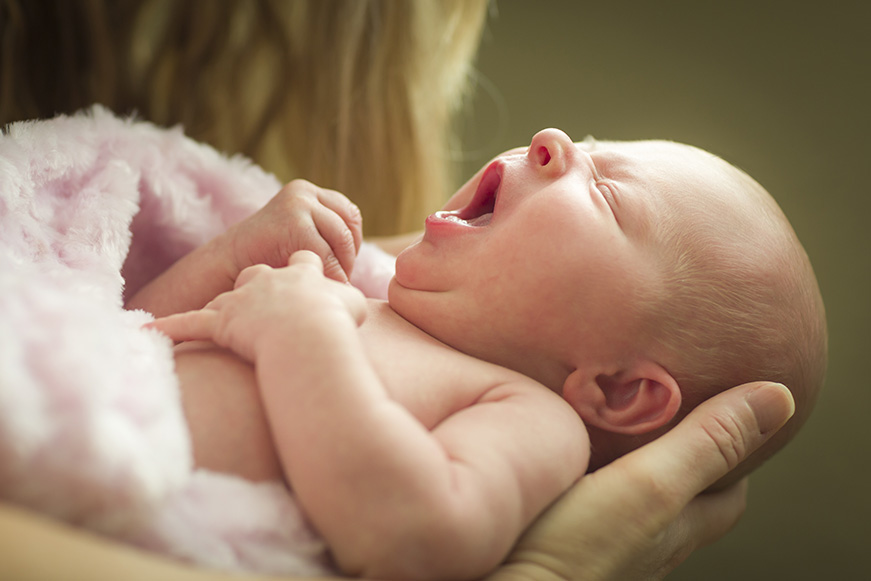 of Heartbeat International
of Heartbeat International
Fall is here! With this great season, we think about football, pumpkin spice, and…baby safety?!?! Yep, in addition to being the time of shifting weather and changing leaves, September is recognized as Baby Safety Month.
In the spirit of recognizing the role of having a safe environment, here are a few safety tips that impact a group living environment, especially with newborns:
1. Wash your hands. When you read about promoting health, especially in group environments, handwashing is ALWAYS mentioned as the key starting place. Whether it’s singing silly songs, giving the stink eye, or side-by-side modeling the behavior, figure out a way to create a culture of clean hands. (Note: Stink eye, while a technique used by moms everywhere, should be used only in special circumstances.) If pretty-smelling soap promotes the distraction of germs, it’s worth the investment!
2. Use products according to directions and the child’s age, weight, and developmental needs. That’s the big one given by the promoters of Baby Safety Month so I thought I should feature it! At maternity homes, we are pretty good at “making do”—but when it comes to the well-being of our little ones, I like the motto, “When in doubt, throw it out.”
3. Be attentive to sleep safety! It’s a tough one to convince sleep-deprived mamas and nearly impossible to regulate, I know! But having safe practices around sleep will give peace of mind and hopefully, better sleep to everyone involved. Maybe we could share creative ways to talk about safe sleeping in our Facebook group?!?
4. Be attentive. Watching moms engage deeply with their child(ren) is one of the joys of maternity home life. Whether engaging playfully, meeting the baby’s needs, or watching for safety hazards, homes should be a source of encouragement for the mother’s active participation in the life of her child. The habit of managing distractions—especially with gadgets constantly at our fingertips—is a great life lesson!
5. Prevent slips, trips, and falls. These everyday hazards are a common threat to kids—and adults!—of the house. Pregnant women may not easily see the underfoot and falling objects that can be dangerous to infants on the ground or in cribs. Be aware of cords, ice, and other hazards. Teach the adults of the house (staff, volunteers, and residents) to turn on “risk assessment” eyes as they observe the environment!
Let’s raise a pumpkin spice latte to the safety of our homes! May they be places of well-being and protection!
Dropping the Crayons and Dying to the Specifics
by Hannah Ellis, International Program Specialist
In a recent piece on Pregnancy Help News, Heartbeat shared that Life Choices, a pregnancy help organization in Kittanning, Pennsylvania, is on the verge of opening their first maternity home, “The Inn.”
After hearing the story of the home’s beginnings from Christy Pittman, Project Coordinator, and Bri Sherman, Development Assistant, I noticed a prominent theme that may be helpful to share with others in the pregnancy help movement as you strategize for the future.
In the beginning, Life Choices had a plan for the new maternity home.
Initially, they wanted a large structure that had a lot of rooms (eight, if you want to get specific). Yet, in their searching and looking at properties, God kept bringing them back to the idea of focusing on the relationships with the clients more than the structure of the program. When they began praying through properties, that’s when the funds started coming in and God showed them the house He had for them – a smaller, more intimate house with potential for growth.
Throughout the decision-making process, Christy and Bri realized they also needed to let go of their control over the details of the houseparent situation, and just a week after they did, a couple surfaced who wanted to fill the role.
The team officially closed on the maternity house this summer, and they have begun buying supplies and setting up policies and programming—which, it goes without saying, will be easier to implement in the smaller house. The staff is overjoyed about The Inn, and the official housewarming party will be on September 22, 2017. They are inviting supporters and community members, and are fully anticipating a waiting list.
Life Choice’s motto is “every life valued.” At the new maternity home—named after the inn that was too full for our Lord’s birth—the motto is “two lives at a time.” The Inn offers a safe haven for these women, where there hasn’t been room for them anywhere else. These young women now have a place of refuge where they are free to choose a parenting direction that is best for them.
Proverbs 16 tells us, “We can make our plans, but the Lord determines our steps.” Christy and Bri look back now and laugh about their wanting to be in control and said they’ve “learned to let go and let God move.” He has shown that His faithfulness and provision is beyond their own understanding.
Don’t we do that all too often?
We do more planning than praying and more scheming than surrendering, only to find out God’s design is far better than we could think up or imagine. It’s almost like giving an architect a blueprint for how to build our house. Except, add in the fact that the Architect doesn’t follow human rules or reasoning, and sees the whole picture where we see only a part.
When our Crayola-drawn blueprint gets superimposed with His intricate plan, we are humbled to a place of total trust in His more than capable hands.
What about you? Are you holding on to your design with a tight grip? Or, are you letting God hold the pen as He drafts His intricately beautiful plan? Let’s put the crayons down and instead clasp those hands in prayer, asking God what He wants to do. Trust me; He will blow your mind with what He’ll use you to accomplish.
Ephesians 3:20 – “Now all glory to God, who is able, through His mighty power at work within us, to accomplish infinitely more than we might ask or think.”
There's No Place Like Home
by Mary Peterson, Heartbeat International Housing Specialist
Like Dorothy in The Wizard of Oz, many of the women served by the pregnancy help movement are dreaming of home. A place that is safe. Walls that protect and people who love.
There has been a lot of wild analysis of The Wizard of Oz over the years, trying to unlock the secret meaning of the story. Without venturing too far into that realm, let’s look at the central themes.
Like the Lion, many of the women seeking housing are deeply afraid. That fear might surface as despair, anger, or some other big emotion but, each is looking to the future and afraid of what they see. Being welcomed into a maternity home eliminates some immediate issues and provides the opportunity to find courage for a new path.
Like the Scarecrow, the women might not know what to do, how to start, or where to go. “I don’t know how to be a mom.” “How can I support a child?” The resources provided by a maternity housing program give her practical skills around employment, life skills, and education. And even more important, they build up her wisdom of her gifts and her identity in Christ.
Like the Tin Man, there is a temptation to revert back, to allow things to “rust” and get stuck in old patterns. Maternity homes wrestle with how to invite change in the deepest part of a woman, in her heart. Loving and being loved is transformational. Having stable, caring figures in one’s life allows the possibility of leaving a life of pain to have the fullness of life. Someone can point to the future and say, “I see more for you. I see a vibrant life. I see your heart fully alive.”
For a long time, Heartbeat’s vision for pregnancy help has included the work of housing programs. In recent years, through a partnership with the National Maternity Housing Coalition, a sense of common work has developed amongst maternity housing providers. As homes began talking to one another, we have looked back to the history of maternity housing in order to know where we have been. We have looked at our current realities to understand our similarities and differences. And we’ve begun to look forward to understand how to strengthen existing homes and support the development of new homes.
Our own Yellow Brick Road, if you will.
One strategy is to be a resource for fostering knowledge and skills–and great tools have been developed. One such tool is Maternity Housing Essentials. It’s a guidebook, drawing from the experience of various models and perspectives, to document the key issues related to housing. Laying out the strengths and challenges of various perspectives, the manual invites housing programs to think deeply about their structure and make informed decisions.
A deeper goal is to rally the hearts of those called to or involved in housing. Whenever homes gather, there is a fast sense of “someone who understands.” It’s a work that can be life-giving and draining, all at the same time. By facilitating community and connection, both virtually and in person, Heartbeat is trying to bolster those who give deeply to this important work.
Among homes, there is a great deal of variety in methods. However, there is a strong sense of unity in mission. And that sense of mission reconnects housing to the pregnancy help movement as a whole. Maternity homes exist to support vulnerable women and accompany them through pregnancy related decisions and beyond. In this way, we share a great deal in common with pregnancy centers, pregnancy medical clinics, and adoption agencies.
So, if you find yourself thinking, there is no place like home as you dream about the future, we are ready to help. Just click your ruby slippers together or click here for more information.
Want Effective Program Development? Focus on Healthy Interactions
by Mary Peterson, LAS, Heartbeat Housing Specialist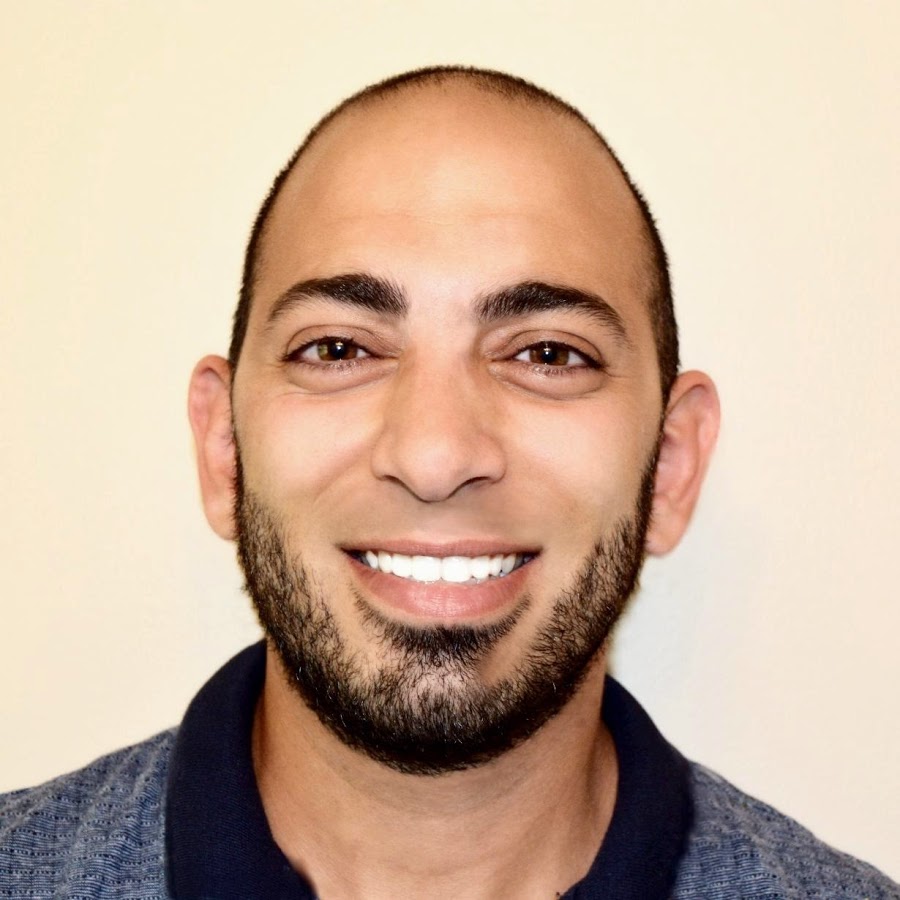
It took me awhile to get it.
Geries Shaheen, a Therapist and Adjunct Professor in Psychology, was delivering a workshop entitled "The 3 Indispensable Elements of Holistic Services." It was the last session at the 2017 Heartbeat Conference and my head was already full of faces and new ideas. But eventually, his core message started to click: Doing life together in a maternity home IS the heart of program.
Using principles of pyschology, Shaheen invited participants to think of their work in the maternity home as "naturally conditioning individuals to become active participants in their own reality." In that way, the work of maternity housing staff is less about creating the perfectly managed structure and more about granting the mother opportunities for healthy experiences and helping her make sense of those experiences when needed.
"Organizations tend to ask questions like, 'How many house outings should we plan per month?' but it would be much more natural to approach outings in a more human way. For example, 'How many outings do I go on per month myself? What does my family do?'" Rather than focusing on executing an overly rigid structure, Shaheen encouraged the natural spontaneity of life to have a central place in the life of maternity homes.
"The spontaneous moments of praise that are part of daily life," he taught, "give the brain little boosts of dopamine.” Giving clients these doses of encouragement for small tasks...for example, giving praise when putting on the seat belt...is actually allowing the brain to experience pleasure which in turn, trains the brain to create new neurological pathways. He continued, "We are beings that FEEL first. THEN, we make meaning." Thus, in our interactions with residents, we should allow and invite feelings -- praise, safety, forgiveness, beginning again.
Pointing to various types of therapy, Shaheen acknowledged the role of the clinician. He encouraged homes to actively engage with counselors and therapists. Homes can request "summaries of treatment" and "overview of the goals for the client." Or even “results to a psychological evaluation” which would include mental health goals. But, having been a house-father in a maternity home, he repeatedly returned to the power of relationship.
There is something in his message that I continue to mull on. In my own thinking about the big picture of maternity housing, I've been grappling with the difference and the lack of difference between homes with clinical staff such as counselors, social workers, and therapists, and those without. What is lost? What is gained? In Shaheen's insights, there is a kernel that bridges the therapeutic environment with the loving home. That is simply, the centrality of relationship in experiencing healing and change.
Interested in hearing this workshop or others from the 2017 Heartbeat International Annual Conference? Click here to order.
Geries Shaheen is a Provisionally Licensed Professional Counselor operating in and around St. Louis Missouri. He is the behavioral ministries department head at Saint Louis Christian College and teaches psychology classes. He invested 3 years in the lives of pregnant and parenting teens as a house parent through The Sparrow's Nest Maternity Home. Geries provides Adolescent/ Family Therapy through Preferred Family Healthcare, holding his BA in Intercultural Studies from Lincoln Christian University, and his MA in Professional Counseling from Lindenwood University.
Great-Hearted Leadership
by Mary Peterson, LAS, Heartbeat Housing Specialist featuring Susan Barrett and Peggy Forrest
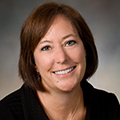 |
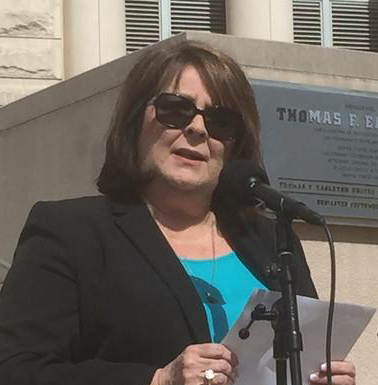 |
Years ago, I was introduced to the word magnanimous. It’s a mouthful and hard to spell! But, it is used to describe great-hearted individuals–people of courage, insight, conviction, action.
It came to mind when I thought about two leaders in the pregnancy help community, both with vibrant maternity housing programs, who have recently filed lawsuits against governmental bodies.
Susan Barrett, Executive Director of Aid for Women in Chicago, IL, currently has an injunction against the implementation of SB 1564, requiring all medical providers in the state to refer for abortions and counsel clients as to the "benefits" of abortion. “The law would not allow us to continue our mission,” she stated directly. “There was no escaping. If we were going to be forced to comply, why not fight it?”
Peggy Forrest was in a similar position. As Executive Director of Our Lady’s Inn, she recently filed a lawsuit against the so-called “Abortion Sanctuary City” code (St. Louis Ordinance 70459). The ordinance prohibits any organization, church or business from hiring or firing employees on the bases of what the code refers to as, “reproductive health decisions or pregnancy status.” Forrest passionately noted, “With such infringement upon our rights as citizens of the United States and of the state of Missouri, it left us absolutely no choice but to stand up and fight, or pack up and move out of the city of St. Louis. And moving is not a viable option.”
I asked these leaders to talk about overcoming the fear related to filing a lawsuit. Forrest noted that her staff is fully supportive of the action, “we have each other’s backs and know that the Lord is on our side, so we are not afraid.” Barrett echoed the sentiment, “We are not fearful. We put a lot of thought into it and our faith compels us to be strong.”
However, both noted the importance of a network of peers in maintaining strength in the fight. “I surround myself with a group of people who share the same values and are also very strong leaders,” Barrett noted. “It is much easier when people are doing it together.” Forrest suggested something similar, “If your mission is in jeopardy, find someone to stand with you. There is strength and power in numbers.”
Various laws and codes that further push an abortion agenda have been popping up in various parts of the country. The pro-life movement and maternity housing community are grateful for these two leaders, and others like them, who have chosen magnanimous leadership. May their witness of great-heartedness encourage all of us to do the same when needed!
For more info about these two programs or their strong leaders, please visit their websites:
Hope in the Face of Addiction
by Mary Peterson, Housing Specialist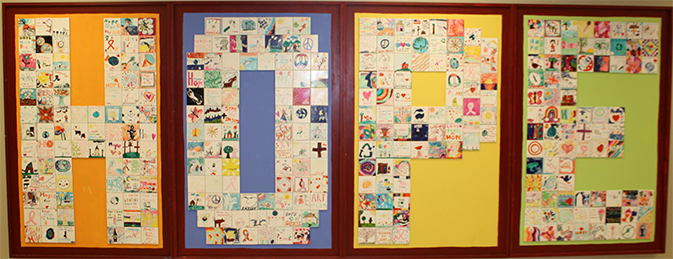
There is no doubt. The situations that women are bringing into maternity homes, pregnancy centers, and adoption agencies have grown more and more complex. Addiction and drug seeking behaviors have become more of a regular occurrence often in conjunction with childhood trauma, criminal histories, sexual abuse, and more.
In an effort to think deeply about how to best serve women who wrestle with addiction, the Leadership Council of the National Maternity Housing Coalition sat down with leaders from Amethyst, a healing community for drug and alcohol dependent women, located in Columbus, Ohio.
The Amethyst model focuses on teaching women how to support one another, how “to do community” as Ginnny O'Keeffe, the Founding CEO noted. This emphasis on relationship is deep in the origins of Amethyst. O'Keeffe recalled the founding of Amethyst as a community of visionary women who came together "as they were getting well" to support the unique needs of other women in recovery.
Sara Niemeyer, the Director of Clinical Services, brought attention to one of these unique components: "The drive to be a good mother is deep in women, even if she has struggled as a mother due to her addiction" she described. "In fact, one of the final aspects of denial that a woman in recovery must face is her faults as a mother." O'Keeffe chimed in, "That can be used for good though! If a woman won't enter a program for her own sake, she may be convinced to enter for the sake of her children."
Amethyst has long been aware of the relationship between trauma and addiction and keeps up to date on research and new findings. Outlining the stages of the Amethyst program, Niemeyer noted that women may be able to address addiction issues (i.e. relapse plan, knowledge of triggers) more quickly than they can address traumas. "Self-regulation techniques allow women to control the physiological response that kicks in when trauma is triggered in women, " she taught us. "Self-regulation skills like deep breathing and stretching are extremely effective at getting women out of freeze, flight, or fight mode." "For women, addressing grief and loss is the gateway to addressing traumas," O'Keeffe added. "As women we have to learn to feel our feelings in healthy ways."
Pregnancy help organizations often wrestle with what they can do without skilled practitioners in addiction recovery on staff. When that question was posed to the Amethyst team, O'Keeffe was quick to respond, "Clinicians, peers in recovery, supportive individuals...ALL have a role in recovery. It’s a team—use whatever tools you can!"
The discussion begun with the powerful testimony of one of the Amethyst clients. She began by sharing the events of her childhood and summed up by saying, "I lost my voice." It was evident to all in attendance that she had re-found her voice at Amethyst, speaking of her future with clarity and hope. In her story, the housing leaders in attendance heard echoes from the situations of many women they had served. And they carried home a message of hope.
To learn more about this program, please refer to their website: www.amethyst-inc.org/.
Additional Advice from the Staff of Amethyst
- Be aware of pain medication after birth as a problem area for those with addiction.
- Get releases from all past treatment programs as part of intake.
- Women don’t do “street homelessness” the same way that men do. They often find multiple people to bunk with.
- Often the biggest fear in entering a treatment program for the mother is that she will lose her children. A key message to communicate is “we can help you keep your children.”
- Encourage and provide opportunities for women to continue to come together as a community once they leave the program.
- Smoking triggers the same pleasure center in the brain as does alcohol and drugs and thus, is not allowed and treated as part of treatment at Amethyst. The program provides nicotine replacement.
- Have an attitude of “what has happened to you?” rather than “what did you do?” Much of women’s trauma is related to authority figures. As women are interacting with authority figures, it may be a trigger.
- If a woman doesn’t fully report traumas in her life, it may be that she is not sharing due to trust issues OR that she does not remember.
- The clients are the best source of information on new trends in drug-seeking behaviors and what is being used.
Building a Culture of Adoption: It Starts at Home
by Sarah Saccone, Program Director, Lamb of God Maternity Home
So much has changed in the past 30 years with regards to adoption, especially as it relates to maternity homes.
In past decades, a woman would disappear to a maternity home cloaked in all of the shame of being pregnant out of wedlock. She would then re-enter her community, carrying a huge secret, and in many cases not even knowing into what family her baby was placed.
Although things today are completely different there are still misconceptions from some of our biggest family influences and in the media.
There is a great deal of confusion between private adoptions and foster care. Also, many beliefs that are deeply rooted in families that play a crucial role in what a woman in crisis knows and feels about adoption.
In today's society, pregnancy out of wedlock has become the norm. We as pro-lifers know that life is ALWAYS better than death and strive to work with women to aid them in making the best decisions for their babies and themselves. Sometimes women feel that the best form of parenting they can give, is to lovingly choose an eager couple to take on the job. It is OUR job as maternity home leaders to make absolutely certain that a woman making the courageous decision to place her baby is comfortable, supported, and well informed in our maternity homes. We have found that this can be a tricky task.
There is so much that goes into finding the perfect balance of honoring women who choose to parent and honoring women who choose to place. Below are ten ideas on how to make your maternity home more friendly to women who are making the decision to place their babies for adoption.
- Use positive adoption language. Stay current with the words and phrasing that honors adoption as a heroic choice. Examples of this are placing or making an adoption plan vs giving up, parenting vs keeping, birth parent vs real parent.
- Vet those coming into the home. Screen volunteers to be sure they are pro-adoption or at the very least, able to keep their opinions to themselves. Have regular training for staff so that they can speak about adoption with respect and ease.
- Use personal experiences and stories with extreme caution. Allow each woman to experience adoption in her own way. She does not need to know that you were married at her age and made it work or that your cousin adopted children overseas who have significant challenges or that you watched an adoption story gone wrong on television.
- Discuss clearly with each resident, upon admission, about their thoughts on parenting and placing and their ability to honor others’ decisions. Uphold an environment of respect for each mom's decisions and teach birth moms how to be advocates of their decision.
- Baby showers are lovely but can be painful. While adoption-minded women may enjoy having baby items to send along with their child’s placement, there may be more appropriate ways to “shower” adoption-minded women (i.e. new pajamas, perfume, educational supplies.) Perhaps, there should also be the opportunity to opt out of the shower all together. Consider holding baby showers in a neutral location.
- Note visual cues within the home. Look around your home at the photos, quotes, and artwork. Is it strongly suggestive of mother and child? Does each room come pre-stocked with baby items? Be sure that the message the home is promoting implicitly communicates support for adoption as a possible outcome.
- Think of ways to make a woman who placed her baby feel loved, special, and honored when she comes home from the hospital. For example, a welcome basket, weighted Teddy Bear, or necklace with baby's name engraved may be appropriate gifts.
- Match the adoption preparation with the parenting preparation. While women who are parenting go to parenting classes, women who are placing go to support groups. Bring in adoptive parents and adopted children to give their testimony. Find appropriate education and support for their decision. Create or use appropriate curriculum for each population.
- Be mindful and empathetic. Don't gush over a resident’s baby right in front of a woman who is placing. Know that this will happen often so it doesn't need to also happen with their mentors and most trusted influences.
- Acknowledge birth mom’s joy, loss, suffering, and strength. It's ok to talk about adoption! Women who choose adoption should know it will be the hardest decision of their lives and one that brings them much joy and strength. Rituals and other supportive procedures at key moments help to honor the individuals involved.
 Sarah Saccone serves as the full-time Program Director for Lamb of God Maternity Home, daily giving witness to her passion for women in crisis pregnancy through the gift of adoption.Utilizing her Bachelor degree in Sociology from California State University of San Marcos, she worked as a counselor of homeless youth in a shelter-home atmosphere for nine years. She has served on the boards of several mental health non-profit organizations, been a long time volunteer for San Diego Hospice, and spent time teaching children in East Africa. She resides in San Diego, California.
Sarah Saccone serves as the full-time Program Director for Lamb of God Maternity Home, daily giving witness to her passion for women in crisis pregnancy through the gift of adoption.Utilizing her Bachelor degree in Sociology from California State University of San Marcos, she worked as a counselor of homeless youth in a shelter-home atmosphere for nine years. She has served on the boards of several mental health non-profit organizations, been a long time volunteer for San Diego Hospice, and spent time teaching children in East Africa. She resides in San Diego, California.
Power Up This Summer With Heartbeat, NMHC
 Thinking of conserving power this summer?
Thinking of conserving power this summer?
Well maybe it’s time to think again.
This summer, Heartbeat International is partnering with the National Maternity Housing Coalition to pilot six highly interactive strategy sessions we like to call “Power Conversations.”
Short, sweet, and packing a punch, these 30-minute conversations are a perfect environment for maternity housing leaders at all stages of development and experience.
Here’s what to expect from Power Conversations this summer:
- July 10: Smooth Departures
- July 17: Intake Methods
- July 24: Outbreak Prevention
- July 31: Difficult Departures
- Aug 7: Transportation Norms
- Aug 14: Chore Systems
All sessions start at 2 p.m. (Eastern Standard Time)
Call-in Number: (559) 726-1300
Participant Access Code: 705126
Baby Daddies and the Treasure Hunt
by Mary Peterson, Housing Specialist
 Somewhere along the line several years ago, moms started using the title “Baby Daddy” to refer to the man they had been involved with when they became pregnant.
Somewhere along the line several years ago, moms started using the title “Baby Daddy” to refer to the man they had been involved with when they became pregnant.
“The ‘baby daddy’ went with me to doctor today.”
“Him? Nah, we’re not dating—he’s the ‘baby daddy.’”
When it was still a new term, I remember hearing it a few times. Soon after, I saw it used in a pop magazine and realized that the term wasn’t just a passing phase. A sign of our times, the phrase “baby daddy” has come to be commonly understood as referring to a specific situation and calling to mind attributes of a specific kind of man.
It is this man who is often connected to the women of our homes.
More and more, I hear pregnancy help organizations reflect on how to better engage men. For maternity homes, this question is framed as, “How do we help ‘baby daddies’ grow into fathers?”
In the maternity home setting, this can raise the question, “If they are choosing to parent, how do we help single mothers—fatherless families—to invite the right type of men into their lives and raise children in the context of authentic masculinity?”
It’s a difficult tension—wanting to honor the role a man plays as a father and simultaneously, wishing a new mom would finally sever a destructive attachment to a man who is just using her, abusive, manipulative, or in and out of jail.
Hope Mansion in Cedar Hill, Texas, led by Angie Hammond, has developed an interesting program to address this tension.
The program, still under development, uses communication with the women as the leverage point. In order to be able to spend time with the mother residing in the maternity home, the man must walk through a variety of steps in a process they refer to as a “Treasure Hunt.”
One of the first steps is to require a formal letter from the “Baby Daddy,” in which he must explain his intentions regarding the resident in the Home and the baby. Once the Home receives the letter, he is provided with the workbook, “The Me I See,” from Loving and Caring. Next, he makes a request to meet with the House Dad, giving the opportunity to engage in a deliberate conversation.
Calling upon his masculine drive to take action, the intent is for the man to realize the mother of his child truly is a treasure—a woman worthy of his sacrifice. If he fails to take the simple steps required, then he is not allowed contact, and the house parents encourage the woman to think deeply about what it means that he was unwilling to make such small gestures in order to stay in her life.
“We are pleased by the level of conversation that has opened up,” Angie says. “The Treasure Hunt puts the initiative and the consequence into the hands of the man. And thus, provides an opportunity for real growth.”
Has your home, like Hope Mansion, discovered effective strategies for engaging men and teaching fatherhood? We would love to hear (and share!) more.
Please don’t hesitate to contact me at This email address is being protected from spambots. You need JavaScript enabled to view it. or post to the National Maternity Housing Coalition Facebook page. Who knows, maybe this is the beginning of a longer conversation we can have via conference call or through the Heartbeat Academy. Let’s learn from one another!
For more information on Hope Mansion, visit: https://www.hopemansion.com.

